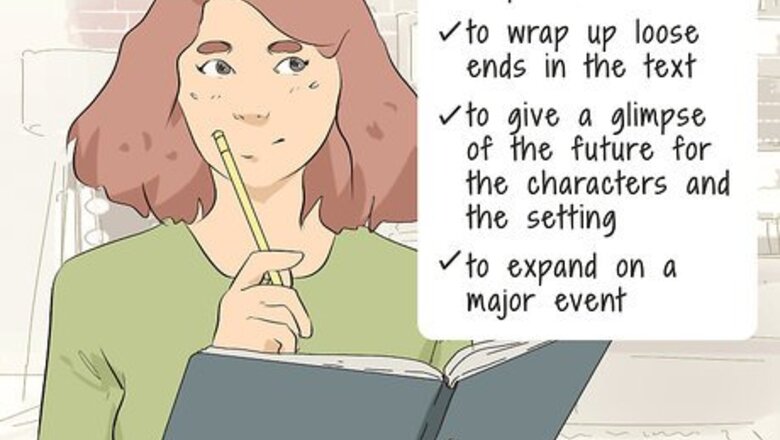
views
Starting the Epilogue
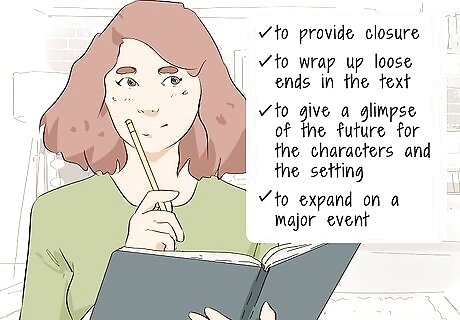
Determine the purpose of your epilogue. You should start the epilogue with a clear purpose in mind, as this will ensure that the epilogue feels intentional and full of meaning. Decide what the main purpose for your epilogue will be, and write with that purpose in mind. Ask yourself what you want to explore in the epilogue. What has been left out of the main text that you still want to write about? You may write an epilogue to provide the reader with some closure, to wrap up loose ends, or to give the reader a glimpse of the future for the characters and the setting. Some writers also use an epilogue to expand on a major event that they did not get to explore in the climax of the novel. For example, you may decide the purpose of your epilogue is to wrap up loose ends about the fate of the main character. You may then focus on where the character ends up ten years or twenty years after the main story ends.
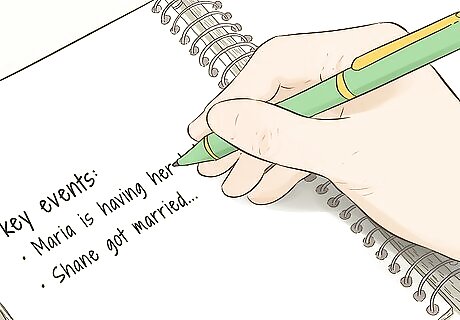
Identify the key event or events in your epilogue. You should also decide what the key event or events are going to be in the epilogue. Outline the key events so you can get started on the epilogue and compose a draft of it. You may create a short plot outline for the epilogue or determine which events you are going to discuss based on the characters you are going to mention in the epilogue. For example, you may decide you are going to write an epilogue that flashes forward twenty years to tell the reader what happens to certain characters. You may list these characters and then write several sentences about specific moments that occur in the future. These moments could comprise the whole epilogue.

Read examples of epilogues. You can read epilogues in published works to get a better sense of what works and what doesn’t. You may read an epilogue for a play or a novel. You may read: The epilogue in Animal Farm by George Orwell The epilogue in Atonement by Ian McEwan The epilogue in The Handmaid’s Tale by Margaret Atwood
Composing the Epilogue
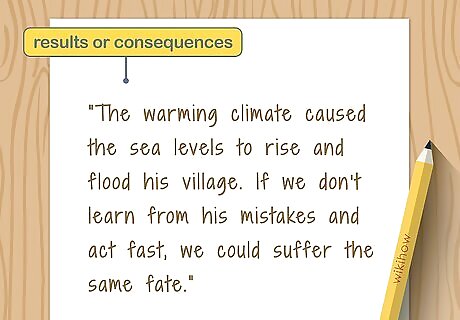
Discuss the results or consequences of the climax. In the epilogue, you may decide to focus on the results or consequences of the high point of the story, known as the climax. Writers will often take this approach if the ending of the story is the climax and the reader is left wondering what happens as a result of a major conflict or dramatic moment. You may opt for an epilogue that gives the reader a resolution to the climax so they are left satisfied at the very end of the book. For example, you may have a book that ends with the death of a character. Rather than leave the reader hanging, you may decide to include an epilogue that explores how the death of the character impacted the other characters in the novel.
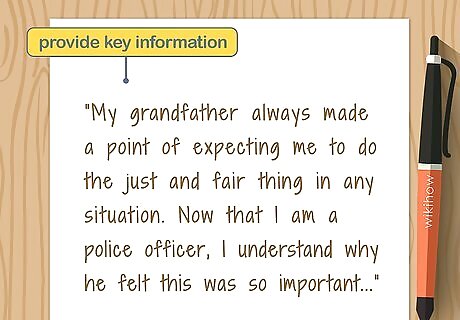
Provide key information that is not in the main text. You may write an epilogue that provides information for the reader that was not included in the story as a way to give the reader more. You may focus on information that was withheld in the main text and explore it in the epilogue. For example, in the epilogue you may discuss what happens to a character who falls ill or a character who is pregnant. Try to include information about major characters in the story, as you want the epilogue to feel important and necessary to the reader.
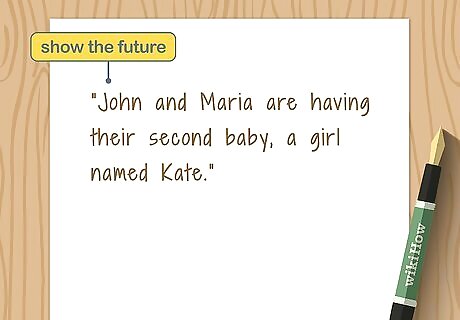
Take the reader into the future. You may use the epilogue to do some time travel and let the reader know what happens to the characters and/or the setting of the novel in a future time. You may explore where certain characters end up in the future as well as how their relationships shift or change. You may also discuss how the setting of the novel evolves as time goes on. If you decide to jump forward in time, you should try to make the characters’ stories feel realistic. Putting in details that do not seem to mesh with the main text may confuse your readers and undermine the rest of the story. Aim to keep the flash-forward details about the characters realistic and nuanced. For example, you may jump forward in time and explore the dissolution of the marriage of two characters. You may note that one character is now dating another character featured in the story.
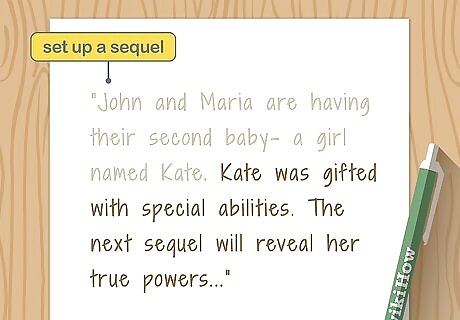
Set up a sequel in the epilogue. Some writers will use an epilogue to set up a sequel. This may be useful if you plan to write a series of books with the same characters or at least one more book in the same world in the future. You may create an epilogue that acts as a kind of preview of what will come in the sequel. Or you may end the epilogue on a cliffhanger that leaves the reader wanting more, preferably in the form of a sequel. For example, you may end the epilogue by having two characters get together and have a child. You may then indicate that the child has special abilities or is in grave danger, an issue to be resolved in a sequel.
Polishing the Epilogue
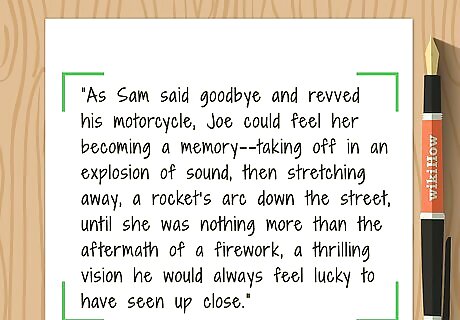
Keep the epilogue concise. Though you may be tempted to write on and on, try to keep the epilogue brief. Typically epilogues are the equivalent of a short chapter, running around five to ten pages or less. Avoid an overly long epilogue that tries to cover a lot of information. Leave the reader with just enough to feel satisfied. You may read over the epilogue once you have a draft of it and consider if there are any sections you can revise or cut down. You may find that you are being redundant or that there are details that can be removed.

Read the epilogue out loud. Once you have completed a draft of the epilogue, you should read it aloud to yourself and listen to how the words sound on the page. Make sure the epilogue uses the same language and style as the main text so it does not seem out of place. Check that the details in the epilogue are clear and engaging for the reader. You may also show the epilogue to a sympathetic reader for a second opinion. Ask them if they feel the epilogue adds to the main text and is compelling.

Get feedback on the epilogue from a friend or colleague whose opinion you trust. Show him or her a draft of the epilogue. Ask them to provide feedback on your work and suggest how you can improve it or make it stronger. You might show the draft to several friends or colleagues.

Make sure the epilogue fits the tone of the rest of the book. Typically the epilogue complements the tone and mood you have already established, especially if you end the main text on a high note or a climax. Adopt a similar tone in the epilogue so it flows well and leaves the reader satisfied. An alternative is to adopt a different tone than that of the main text so the reader knows they are reading extra information or content that may complicate their initial reaction to the ending of the main story. You might do this if you want the epilogue to leave the reader wondering or unsettled.











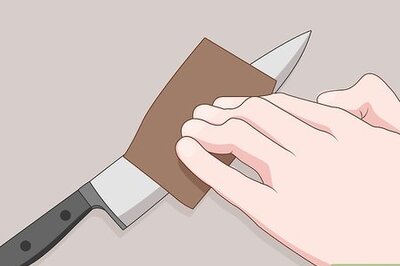







Comments
0 comment